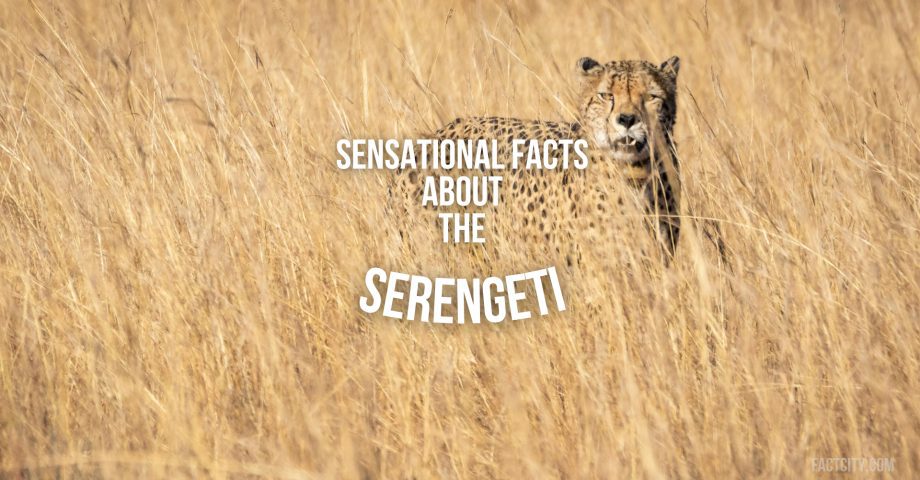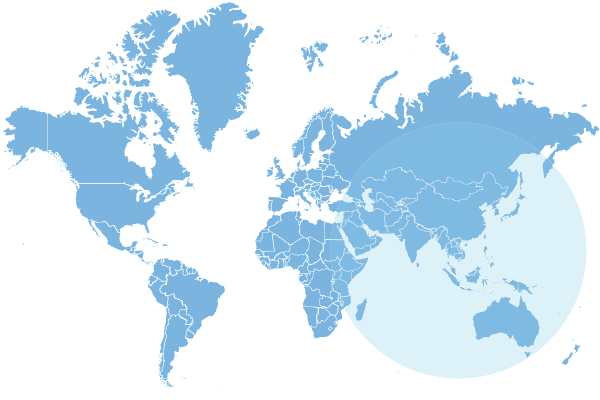Beautiful and bursting with wonderful wildlife, the Serengeti is one of the world’s most important natural reserves. It’s home to thousands of species of flora and fauna, out in Tanzania in North Africa.
When people think of African wildlife and safari experiences, they likely think about the Serengeti first – but, as it happens, there’s a lot more to learn about this region than just its magnificent animals (even though they are absolutely the star attraction!). Here are some fascinating facts about the Serengeti that may just turn your head.
1. The Serengeti is a truly enormous stretch of land.
The Serengeti is one of many savanna plains you’ll find across Africa as a continent. It’s around 11,580 square miles (around 30,000 square km) large, provided you measure it from the tip of the National Park in Tanzania over to the Maasai-Mara reserve in Kenya.
It’s an undulating stretch that is home to many migrating beasts, in particular wildebeest, who we’ll get to in a little more detail shortly.
To give you an idea of just how big the Serengeti actually is, let’s compare it to the biggest British National Park, the Cairngorms, up in Scotland. At around 1,748 square miles or 4,528 square km, our biggest park is barely a fraction of the size of the Serengeti!
2. The Serengeti is usually pretty hot.
Given its position in North Africa and that it is so close to the equator, it’s unsurprising that the Serengeti is famed for being extremely toasty. Temperatures typically vary between 15 and 28°C, which can vary across the region’s seasons, which are cool and dry between May and August, warmer in September and October, and warm and wet between November and April.
Believe it or not, that’s not a mile away from the temperatures we often witness in the UK, despite our reputation for being cold and wet! We typically see temperatures rise as high as 25°C, though we’ve been setting higher and higher records over the past few years.
3. There’s a meaning behind the name Serengeti.
The word Serengeti comes from the Maasai word ‘Siringit’, which means ‘endless plains’. It’s thought that European explorers found the original name difficult to pronounce, which is why the name Serengeti has stuck in English pronunciation.
Either way, ‘endless plains’ is more than fitting given the area’s immense size and undulating terrain!
4. The Serengeti is absolutely home to some incredible wildlife.
It’s true – the Serengeti’s fame for being a hotbed of wildlife activity is well deserved. You’re likely to see all kinds of beasts traversing the plains here, such as elephants, zebras, wildebeest, rhinos, and gazelles.
In fact, let’s break these creatures down into numbers, fact fans. According to National Park statistics, there are said to be more than two million animals with hooves alone across the whole of the plains! Beyond that, there’s a healthy population of more than 4,000 lions, and there’s said to be around 500 species of bird, at least.
5. The wildebeest here travel around and around.
If you’ve ever taken the wrong exit on a roundabout and have had to drive around it over and over again, think of how wildebeest feel! It’s said that these beasts migrate in a circular fashion around the Serengeti National Park. Given its size, there’s plenty of ground to pound.
This curious migration pattern is vital for the ecosystem, too. Experts believe that wildebeest grazing and fertilising (for want of a better word) is great for keeping vegetation growing. As a very popular Disney film (which happened to be set somewhere similar to the Serengeti) once said, it’s the circle of life…
6. UNESCO recognises the Serengeti.
And, you’d probably expect them to! Recognised all the way back in 1981, UNESCO has placed the plains on its heritage list thanks to its ‘outstanding universal value’ – largely thanks to its untouched migration patterns and its incredible biodiversity.
In fact, UNESCO further notes that the area is worthy of inclusion thanks to the endangered species that still call the Serengeti home. For example, there are still African wild dogs and black rhinos that wander around the region – both are threatened.
UNESCO also suggests that while the park is integral to the wider ecosystem of the local area, it is still under threat to some extent – thanks to water scarcity.
7. The Serengeti is thousands of years old.
It is estimated from radiocarbon dating that the Serengeti is between 3,700 and 1,550 years old. Indications are that the area has been home to grazing animals for approximately 4,000 years!
That said, it only gained National Park status as recently as 1951. Since then, it’s also had boundaries established and even extra parks added in. For example, both the Maswa Game Reserve and an area close to the Grumeti River were added to the Park’s remit in the 1960s.
What’s more, the boundaries of the park were extended into Kenya, too. The bigger the border, the more protection the site gets – nobody loses!
8. It’s not clear how many people from the UK visit the area, but it is immensely popular.
The Serengeti remains hugely popular with visitors from all over the world. In fact, at the time of writing, it’s estimated that around 350,000 people or more head out to the Serengeti purely to take in the incredible landscape and wildlife!
Unfortunately, what I don’t have to hand is an exact figure for the number of people who visit the Serengeti specifically from the UK. That said, it’s estimated that around 60,000 people a year visit Tanzania, so it’s likely the figure is less than this.
Interestingly, the other way around, there are thought to be 100,000 or more Tanzanian nationals living in the UK at the last data record, with most choosing to live in London.
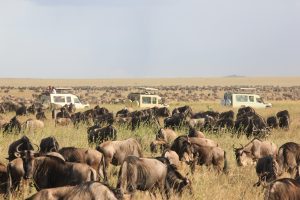
9. There are a few different ways to get to the Serengeti from the UK.
While the Serengeti National Park might feel like a million miles away from Britain, there are actually a few simple routes you can take to reach the plains. For the most part, you will do best to travel directly to either Kilimanjaro National Airport or Arusha Airport in Tanzania, which you can reach from London’s airports.
Airlines such as Qatar Airways, British Airways, and KLM all fly between the UK and Tanzania, meaning there’s a fair amount of choice in who to travel with if you have a preference.
As always, I seriously recommend checking out online apps and resources such as Rome2Rio and SkyScanner, both of which will break down the best and most affordable routes out to Tanzania and the Serengeti, whenever you wish to go.
You’ll then need to drive out to the park itself, meaning it’s a good idea to look for a local cab service once you land at the airport. It’s also a good idea to look for accommodation in the local area.
10. It’s wise to take care when travelling out here.
It’s always a good idea to keep yourself and any personal belongings you may have safe and secure when you travel anywhere new – and when it comes to the Serengeti and Tanzania, there is specific advice offered by the British government.
The UK government advises that you should avoid the border Tanzania shares with Mozambique, along the Cabo Delgado province. It’s because there’s a history of terrorism and extremism in the region.
It’s best to stick directly to the main airports in the region, and to travel in groups if you can.
Before you head to the Serengeti, there are also a few entry requirements into Tanzania to be aware of. First, make sure your valid passport has at least one plank page, and that it will be valid for at least six months after you arrive in the country. And, you’ll need to have a valid visa, a yellow fever vaccination, and to agree to both mpox screening and to avoid taking any wildlife souvenirs back.
11. Help is at hand for UK travellers.
British travellers who need help with urgent travel documents or otherwise when heading to Tanzania and the Serengeti National Park will need to make sure they contact the British High Commission Dar es Salaam, which is available for consultation by appointment.
If you need to contact the High Commission directly, its full address is British Commission Dar es Salaam, Umoja House, Hamburg Avenue, PO Box 9200, Dar es Salaam, Tanzania.
Be sure to check out GOV UK’s further advice on asking for help in case you experience an emergency and need the support of British officials.
12. It’s good to get the right spending money on side.
As you can imagine, not everywhere will be so keen to accept British Pounds, even though the world is certainly shrinking! Therefore, I recommend that you take the time to check out the latest exchange rates between the Pound and the Tanzanian Shilling.
Right now at the time of writing, you’ll likely receive around 3,600 TZS for every Pound. That figure’s been climbing for a little while now, but do remember that exchange rates can change at any time for a variety of reasons – so, always check the latest rates with your bank or your chosen currency exchange bureau before you travel.
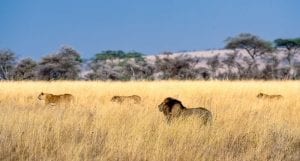
13. Human ancestors roamed the Serengeti many, many years ago.
Studies have revealed that ancestors of humans lived in the Serengeti area millions of years ago. Known as ‘Australopithecus’, research continues into how habitats developed and how climatic events have changed the landscape.
It’s thought that this human ancestor dates back at least 4.2 million years ago on the African continent, and that homo species, as we know them, began to evolve around two to three million years ago. It’s thought that this ancestor was very likely to be a herbivore!
14. The Masaai people call the Serengeti home now.
Today the Maasai people live on the frontiers of the Serengeti National Park. Many are farmers who cultivate land and breed cattle.
People don’t actually live within the park, but its district and frontiers are said to be home to more than 340,000 citizens at the last count. And, it’s hardly a threatened population! It’s thought that the Serengeti population is growing by around 4% every year.
As with wider Tanzania, the most frequently spoken language here is Swahili, though many will also speak English! The native language of Maa is also spoken here, as you’d expect.
15. The area is a prime spot for predators!
There are several predators in the Serengeti. Humans are amongst them, often poaching animals. Lions and hyenas are two of the main predators in the area – something The Lion King got right! They largely feast on zebras and wildebeest (if they can catch them!).
Regrettably, poaching remains a concerning issue in the Serengeti It’s estimated that more than 100,000 wildebeest, for example, are poached by humans every year. It’s possible that, without conservation, this figure could spike even further.
16. The Serengeti is not just desert land.
It’s a misconception that the Serengeti is largely sparse desert land. In fact, part of the Serengeti is semi-desert and part grassland. Climatic changes and those living on the land affect the topsoil quality and – of course – the variety of wonderful plant life growing here!
In fact it’s assumed that there are more than 300 different plant species growing in the Serengeti – much of it is short grass, which actually covers an impressive 75% of the land here. That said, you’ll also find woodlands and forests out here. It’s truly huge, as we observed earlier!
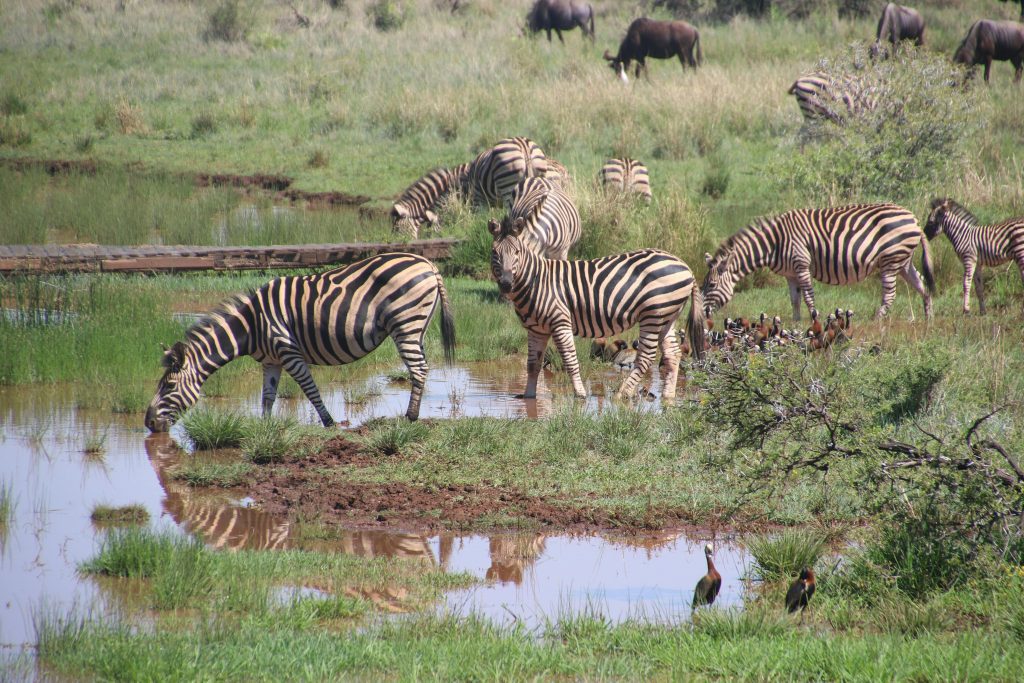
17. Migration seasons here are fascinating.
There are two annual phases to the migratory pattern of the Serengeti. The first is during the rainy period from early January to March. This is an especially good time for calving.
The second phase is from late May to July, when animals move northwest, crossing rivers – this is an especially good time for crocodiles to capture their prey, for example!
As mentioned, you’ll also get to see wildebeest doing loops after loops here – doing their bit for the ecosystem, as it so happens!
18. The Serengeti is under major protection.
The Serengeti area became officially protected in 1974 by the Tanzanian Wildlife Conservation Act and, in 2009, the Wildlife Crime Act.
The governments of Kenya and Tanzania share responsibility for maintaining the Serengeti. The Serengeti is subdivided into 28 wards.
That all means the incredible ecosystem and the wonderful wildlife here are looked after better than ever before. While poaching remains a key issue here, it’s great to know that the natural land is protected to such an extent.
19. The wildebeest are more organised than you might think.
Records prove that wild Wildebeest are changing their habits due to pressure on their historical territory. Excessive intrusion means plants cannot grow quickly enough to sustain in the way they once did!
Hopefully, ongoing protection of the area will continue to allow these beasts to thrive in the decades to come – we all need to think about how we affect the world around us! While the Serengeti is a fabulous adventure spot for wildlife lovers, we should always respect the lands and who they belong to – animals included!
20. The Maasi people had been here for centuries before Europeans arrived.
It’s thought that Dr. Oscar Baumann was the first among Europeans to reach the Serengeti, but Maasi people had been living in the region for more than 200 years by the time he entered the area in 1892.
After a few more European visits, the region would eventually get its own game reserve in the early 1920s, and a second reserve in 1929 would later give rise to the National Park we know so well today.
However, the region hasn’t always been thriving or ideal for life – it’s said that people living in the Serengeti struggled with bovine diseases and drought in the late 19th century. Thankfully, animal (and human) populations have since recovered and are thriving – even though there are still some species in the region that are threatened.
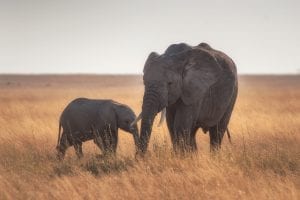
FAQs about The Serengeti
Are there any endangered species in the Serengeti?
Yes - animals in the area such as cheetahs, wild dogs, elephants and black rhinos are now sadly resident on the endangered list. It’s a key reason why the area is so fiercely protected.
What is TANAPA?
TANAPA is the Tanzania National Park management and administrative body. It’s responsible for foot, motor and aerial patrols of the Serengeti. This includes monitoring Ol Doinyo Lengai, the most recently active volcano.
What is the Great Migration?
The Great Migration is a name given to a huge movement of animals in and out of the Serengeti. For example, there are more than 500,000 zebras - and more than 1.7 million wildebeest - that travel from south to north across the region. That’s a lot of walking - and there’s probably safety in numbers!
SOURCES
https://www.serengeti.com/
https://serengetinationalpark.com/
Do you know any interesting facts about the Serengeti? Share them in the comments below!
